
1 Strawberry tree
ARBUTUS UNEDO
ZONES 7 TO 10
This slow-growing evergreen shrub or small tree is native to western Europe and thrives in warmer climates. The glossy leaves, white flowers, and red berries or drupes provide interest in every season. Harvest the fruit in autumn and use it in jams and jellies. Be careful: It bruises easily.
Why we love it: Pollinators enjoy the nectar, and small mammals and birds are attracted to the high sugar content in the fruit.
2 Bunchberry
CORNUS CANADENSIS
ZONES 2 TO 6
Common in forests throughout Canada and the northern United States, this spreading ground cover is a great choice for gardens in cool climates. Features include glossy green leaves that transition to red and purple in the fall and small white flowers that give way to clusters of berrylike drupes that ripen in August and last until fall.
Why we love it: Rabbits and deer steer clear of this plant.
3 Lingonberry
VACCINIUM VITIS-IDAEA
ZONES 2 TO 7
This creeping evergreen shrub forms dense mats, but it's not the leatherlike oval leaves that make it popular; it's the red edible berries that appear twice a year. Eaten raw, the fruits have a bitter taste, but they make an ideal replacement for cranberries when cooked (hence the alternate moniker, northern mountain cranberries).
Why we love it: Lingonberries are superfruits and have the highest antioxidant content of all berries.
4 Common winterberry
ILEX VERTICILLATA
ZONES 3 TO 9
Denne historien er fra October/November 2024-utgaven av Birds & Blooms.
Start din 7-dagers gratis prøveperiode på Magzter GOLD for å få tilgang til tusenvis av utvalgte premiumhistorier og 9000+ magasiner og aviser.
Allerede abonnent ? Logg på
Denne historien er fra October/November 2024-utgaven av Birds & Blooms.
Start din 7-dagers gratis prøveperiode på Magzter GOLD for å få tilgang til tusenvis av utvalgte premiumhistorier og 9000+ magasiner og aviser.
Allerede abonnent? Logg på
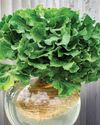
Basics of Hydroponics
Use these top tips and plant picks to have a successful soil-free garden
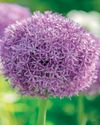
Rooted in Resilience
These hardy perennials will thrive in most zones
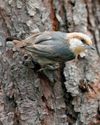
Social and Supportive
Brown-headed nuthatches take a helpful approach to raising their young

All About Owl Pellets
And why you should give a hoot about them

Ask the Experts
Advice from our pros about houseplants, bird feeding and more

BRING THE OUTDOORS IN
Making a terrarium is about as close as you can get to a Zen DIY project. Once you have gathered the proper materials and squared away your plant selections, it's as simple as layering it all together and watching your mini ecosystem thrive. Here, I'll walk you through my foolproof process and cover all the required elements for good filtration, healthy soil, strong root growth and resistance against fungus and disease.

GROW THIS. NOT THAT
Six easy-to-grow houseplants—and six that may not be the right choice for you

Winter MAGIC
Forecasts may be frigid, but grab your binoculars because birding opportunities are still incredible
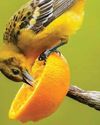
Sense or Nonsense? - Why some birds can taste and smell - but others can't
Does a porcelain berry taste like a blueberry to a gray catbird? Does a block of lard smell like frying bacon to a northern flicker? The short answer is no. While some avian species do have a well-adapted sense of taste or smell, they can't distinguish between flavors and odors the way humans can. They're not picking up every ingredient in the suet you put out, says José Ramírez-Garofalo, an ornithology researcher at Rutgers University in New Jersey and the director of Freshkills Biological Station in Staten Island, New York.
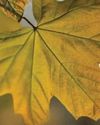
Maple Mania - Amazing facts about this fall foliage mainstay
Amazing facts about this fall foliage mainstay